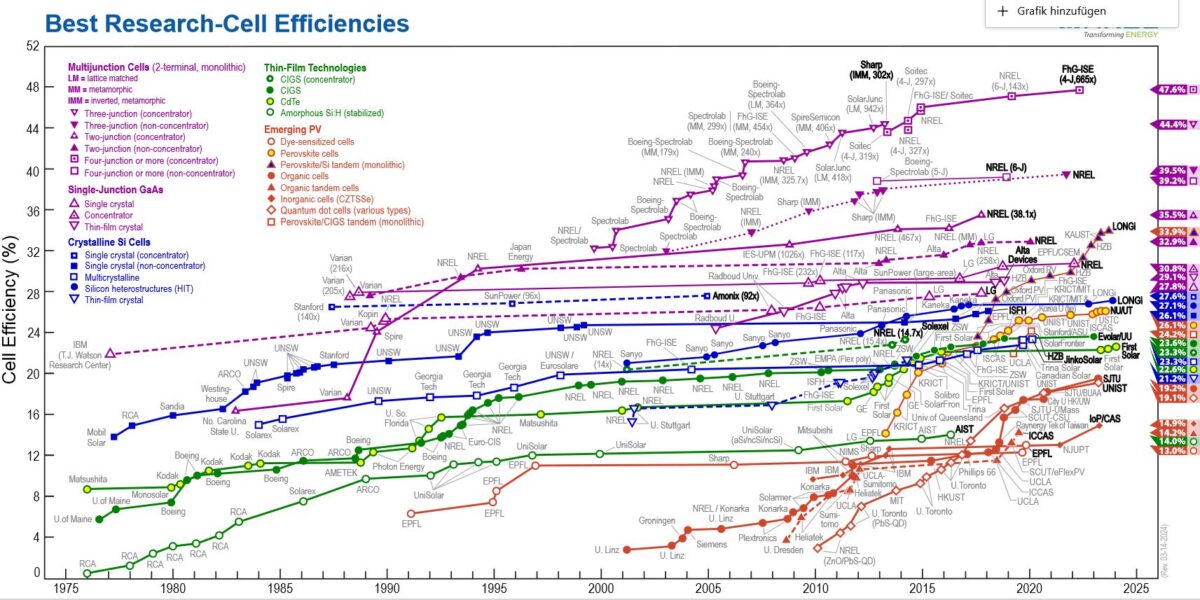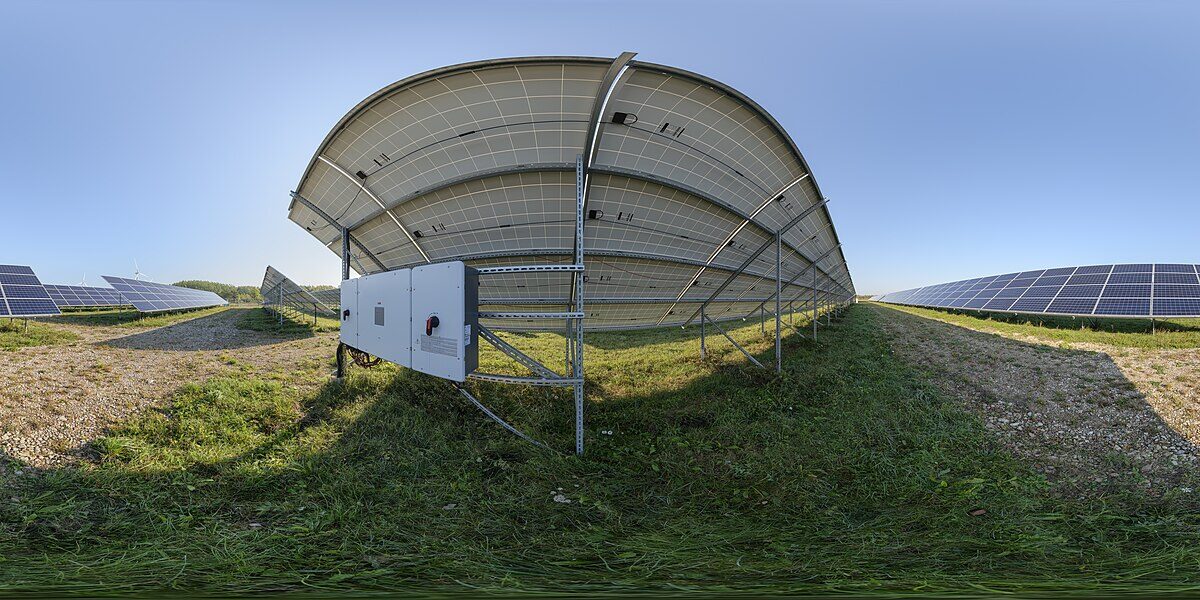NREL has updated its Best Research-Cell Efficiency Chart. The tool highlights the highest confirmed conversion efficiencies of research cells for a range of PV technologies.
“Everything up to the end of 2023 is included,” a spokesperson from the US Department of Energy's research institute told pv magazine, noting the chart also includes important results achieved in the first quarter of this year. “The format of the chart will soon change to include hybrid tandems.”
The chart now includes the 33.9% world record efficiency achieved in November by Chinese manufacturer Longi for a perovskite-silicon tandem solar cell and the 27.09% efficiency achieved by the same company for a heterojunction back contact solar cell. Furthermore, it comprises the 23.64% efficiency achieved in March by US-based thin-film module maker First Solar for a solar cell based on copper, indium, gallium and diselenide (CIGS) technology.
With the interactive version of the chart, users can pull up decades of research data and compare custom charts that focus on specific technologies or time periods. They can find data on a cell’s current, voltage output, and fill factor, in addition to efficiency. The availability of those details will depend on the information in NREL’s records.
The highest research cell efficiency recorded in the chart is 47.6%, for a four-junction cell developed by Germany's Fraunhofer Institute for Solar Energy Systems (Fraunhofer ISE).
This content is protected by copyright and may not be reused. If you want to cooperate with us and would like to reuse some of our content, please contact: editors@pv-magazine.com.




Looking at the upward trends on all these technologies, I wonder if we shouldn’t ditch fusion research and use that money and resources on global roll-out of the tech we currently have at our disposal i.e. solar plants.
With undersea power cables connecting continents becoming a reality, we can supply high density, low-sun areas fairly easily with solar power. If systems and consumers are spaced East-West, we can supply night-usage from daytime areas.